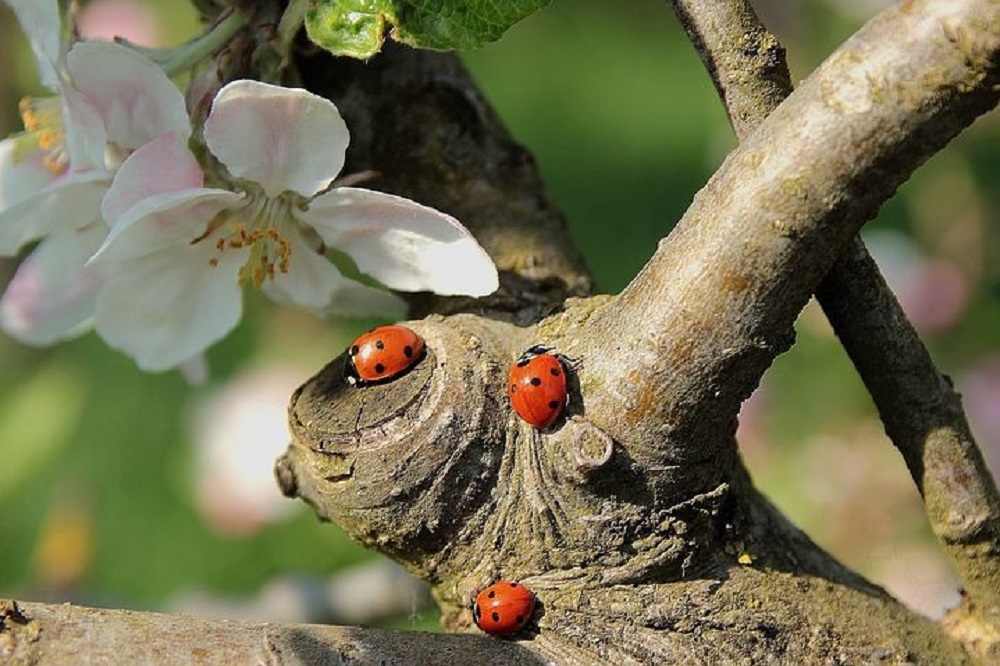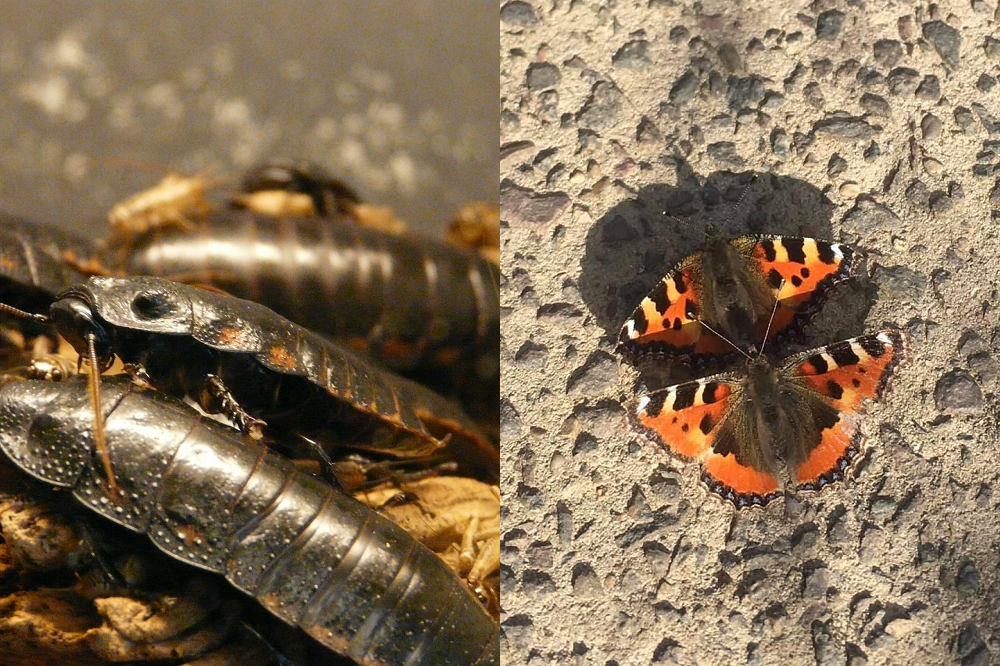Autumn jitters: Tawny Clark holds out a steady hand to insects

Tawny Clark
Standing in the Halloween darkness of Swansea’s Plantasia, amid an explosion of skittering cockroaches and glass tanks filled with venomous beasts, I find myself tentatively holding a giant, hissing cockroach Gromphadorhina portentosa, the size of my palm. Instinctively, I want to run away screaming, but being the responsible adult, I remain statue-still until it’s removed – then immediately hunt out the hand sanitiser.
Children learn through our behaviour, our reactions, and I want them to be fascinated not fearful of these bizarre creatures that can live without their heads for two weeks. They breathe through their skin and keep moving thanks to the spiracles, or ‘mini-brains’ in their legs.
Rationally, I know we wouldn’t be holding this creature if it wasn’t safe, but I feel like I’m fighting against some deeper instinct, and as it turns out, I am.
Three weeks later, I meet Sandra the tailless whip scorpion (or whip spider) at Dr Beynon’s Bug Farm in Pembrokeshire. From the order, amblypygi, she’s an arachnid rather than insect, but creepy crawly, nonetheless.
Initially, the sight of her spiked, vice-like claws sends icy shudders up my spine, but after a swift lesson I discover a surprising fondness for this cave-dwelling, non-venomous and sociable living fossil from tropical climes. Completely blind, they communicate with each other via gentle, companionable stroking.
In Sandra’s case, the strokes of a paintbrush are used to calming effect as she rests on the backhand of her enthusiastic keeper, whose mission is to educate and debug our common misconceptions. It’s worked on me today. I feel obliged to apologise to Sandra for my unkind and wholly unjust words.
But why is it that insects, arachnids, and all manner of creepy crawlies give us the jitters? If we hover the magnifying glass over these often-overlooked invertebrates, a stark picture emerges.
Fundamental
Britain is home to approximately 24,000 species of insect, including 270 native bees, 215 damselflies, and 57 resident butterfly species. (We also have 650 species of arachnid (spider), with arachnophobia making the list of our most common fears). With well over a million species globally, insects make up more than half of all known living organisms, and around 90% of all animal life on Earth. Beetles alone are believed to comprise a quarter of all living things.
With an estimated 41% of the world’s insects facing extinction in the next few decades – around half of all animal life on the planet – it’s about time we stop living in fear and learn to appreciate just how fundamental these species are to our own survival.
Unfortunately, there’s a lot working against them. For starters, their unusual appearance differs greatly from ours. They have too many eyes, too many legs, and innumerable species move in bizarre and ‘unnatural’ ways. The combination of these factors can trigger what’s known as the revulsion, or rejection response, the feeling of disgust. We don’t like ‘different’.
To make matters worse, our brains confuse disgust with fear, and the resulting entomophobia (fear of insects) seems rather inevitable. Biologically, the presence of insects signals to our brains that something isn’t safe to be touched or eaten.
We learn from experience too, through the trauma of bites, stings, allergic responses, and infection. Some insects are dangerous and do pose a threat to us, through the transmission of diseases, bacteria, and parasites as well as directly venomous species. Others are garden and crop pests. Our negativity towards them isn’t completely unfounded.
But culturally, it seems we’ve demonised the whole class of Insecta, placing them into a collective box labelled ‘Fear’, or as is too often the case, ‘Exterminate (indiscriminately)’. Almost half of all animal life, the vital pollinators of our food (and theirs), the ‘intelligent micro-ploughs’ and ecosystem engineers of our precious soils, natures organic pest controllers, the creatures who provide crucial connections on the complex food webs which support and sustain life on Earth. 41%. That’s a lot scarier than the creature hissing loudly in my outstretched hand.

Ingenious
To make matters worse, we view insects as invaders. They appear unbidden into our homes, our safe, hygienic, enclosed spaces. Nature is ‘out there’. When it occurs inside it interferes with our interpretation of safety, security. It plays into our psychological need to control nature, to have it in its place. Which is crazy when you consider that bugs literally live on our eyelashes, and the average UK house supports thousands of invertebrate species. Tidiness, pesticide use, and pet ownership apparently make no significant difference to these numbers so perhaps it’s time to put down the bug spray and embrace this co-habitation? Insects are everywhere, and it’s up to all of us to keep it that way.
Invasive species are another matter. They cost the UK approximately £1.8 billion annually. Non-native insects, often imported accidentally or escaped from private collections, can pose a real threat to native species. The Harlequin ladybird, for instance, out-competes the UK’s 46 native ladybird species for food and predates their eggs and larvae.
Most likely thanks to their pleasing roundness, delightful polka-dots, and endearing name, the buwch goch gota, (short red cow), is one of the lucky few insects – along with the nation’s favourite, pili-pala (the butterfly) – which has secured a much-coveted position in our collective hearts.
We don’t have to like the look of insects or arachnids to appreciate them though. By learning more about what their creepy, spindly, hairy, spiky, and downright bizarre physical features and appendages are actually for, discovering their ingenious evolutionary survival strategies, and by developing an understanding of just how truly incredible creepy crawlies are, perhaps even the most intimidating-looking tailless whip scorpion can gain a place in all our affections.
Support our Nation today
For the price of a cup of coffee a month you can help us create an independent, not-for-profit, national news service for the people of Wales, by the people of Wales.





